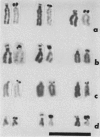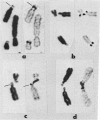Abstract
A silver-staining technique specific for demonstrating nucleolus organizer regions (NOR) showed that the achromatic stalks of the 10 acrocentric autosomes of the human complement represent the NORs. Some variability in number of stained stalks is observed from cell-to-cell and from individual-to-individual. The silver-stained masses may extend beyond the stalks and cover the satellites, especially in chromosomes with short stalks or minute satellites.
Full text
PDF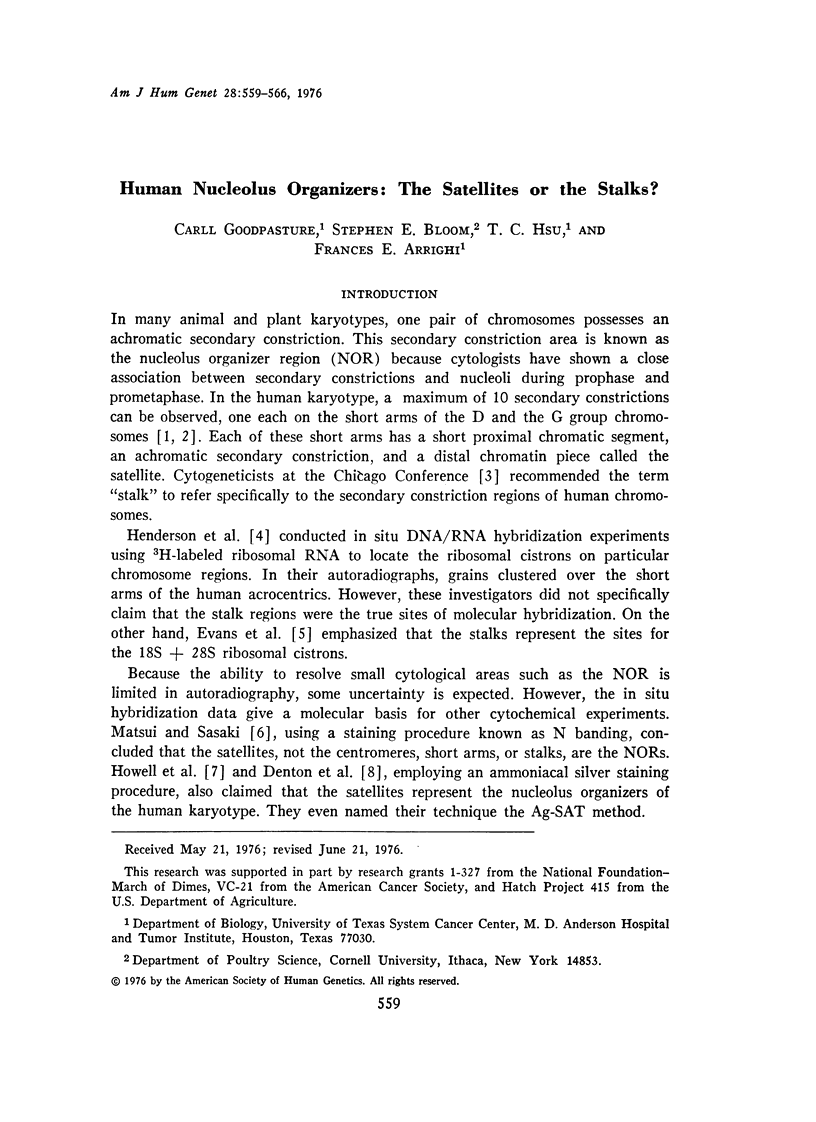
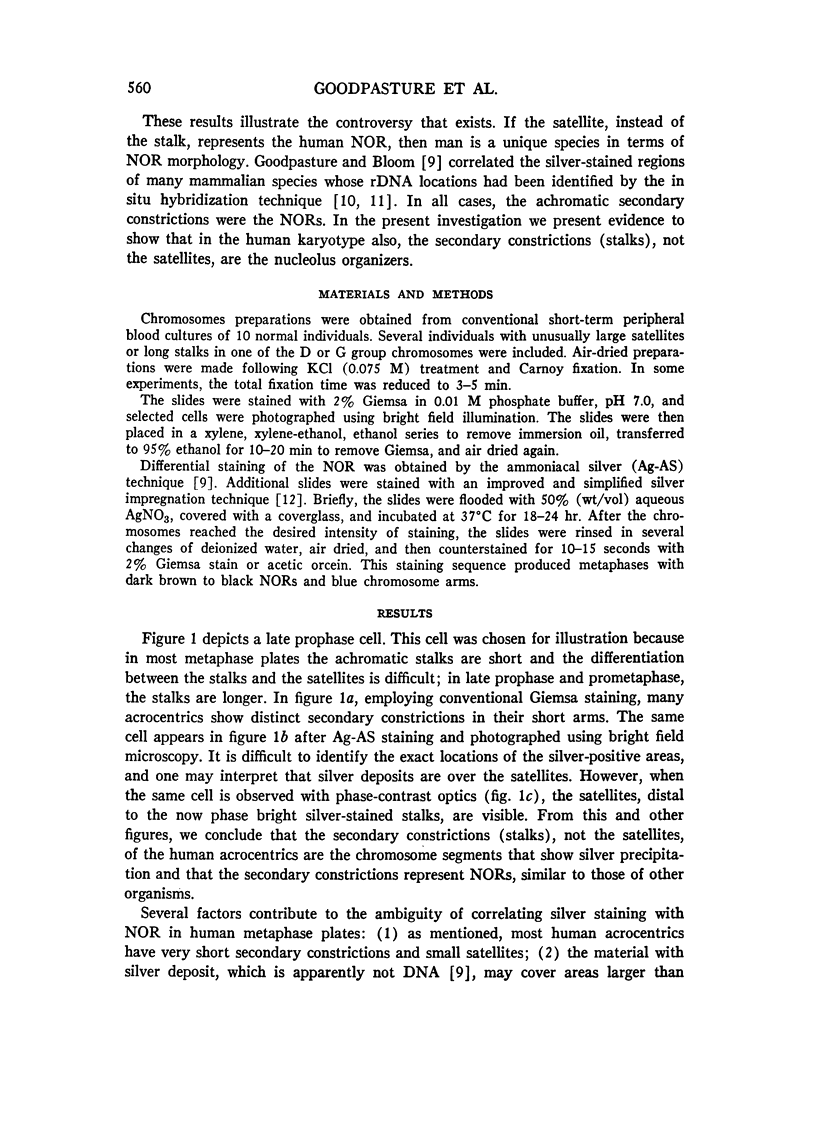
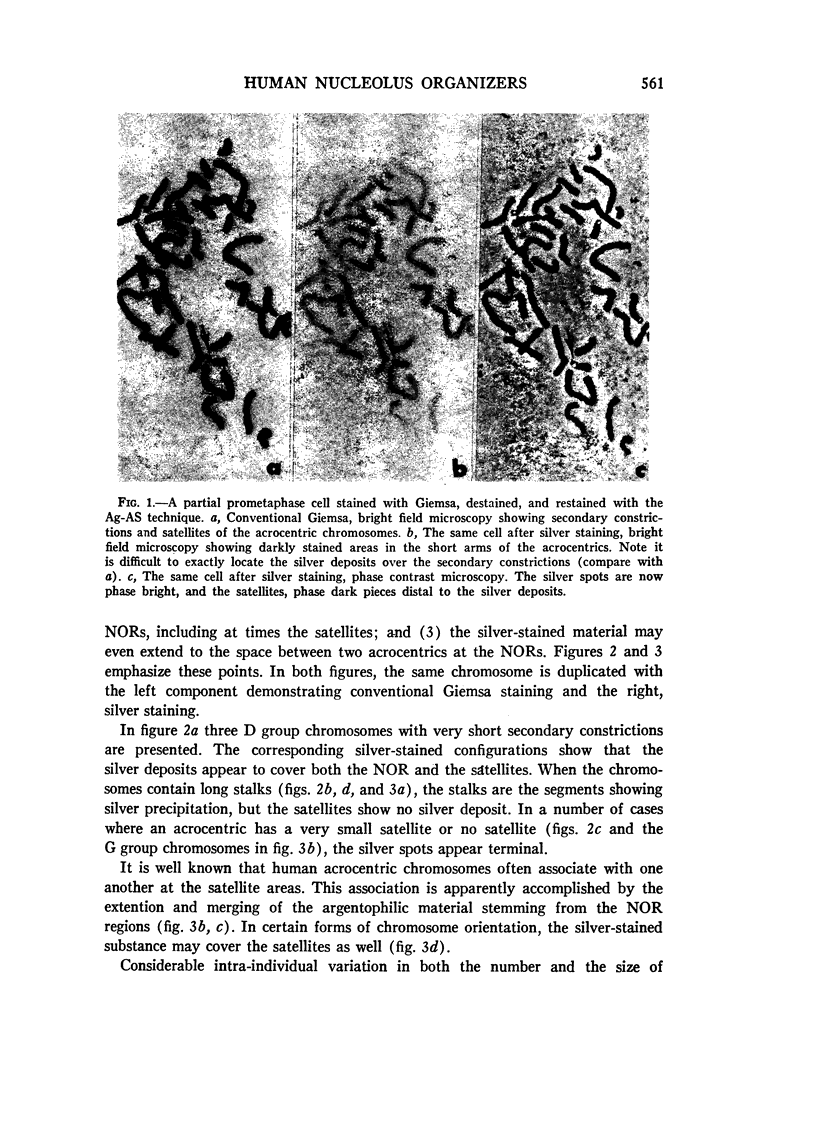
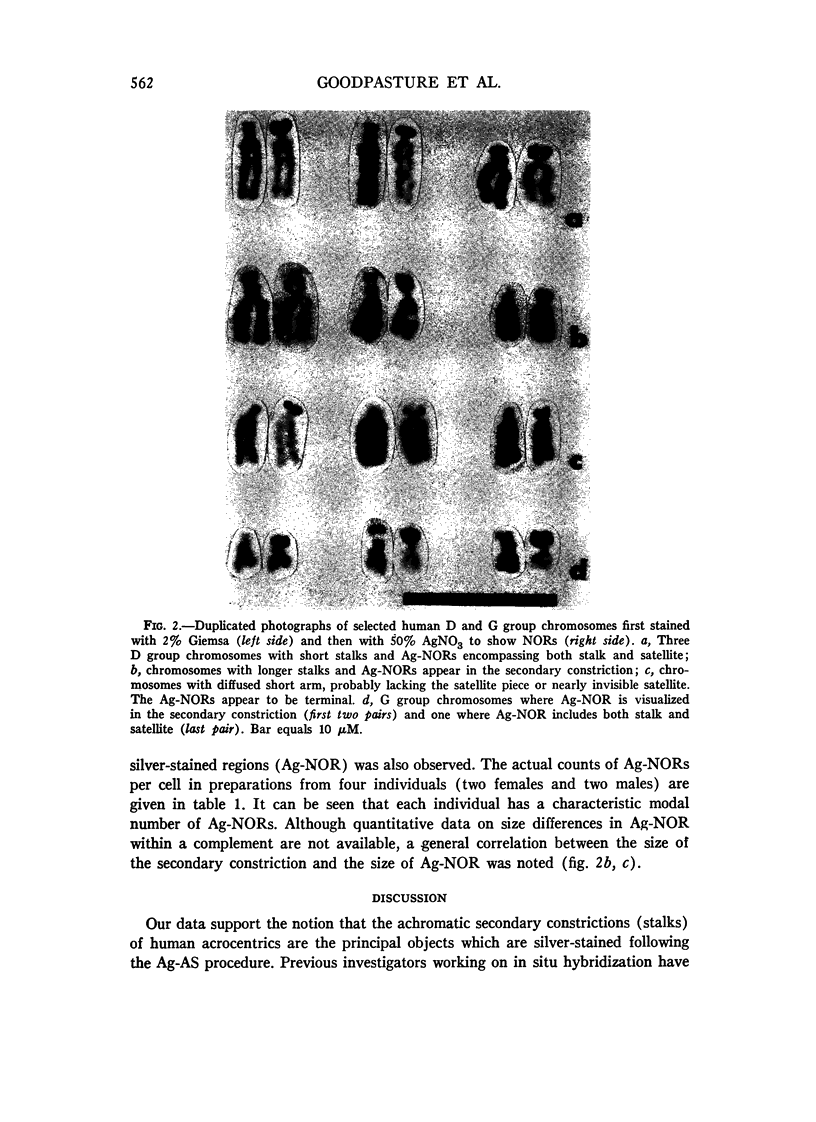
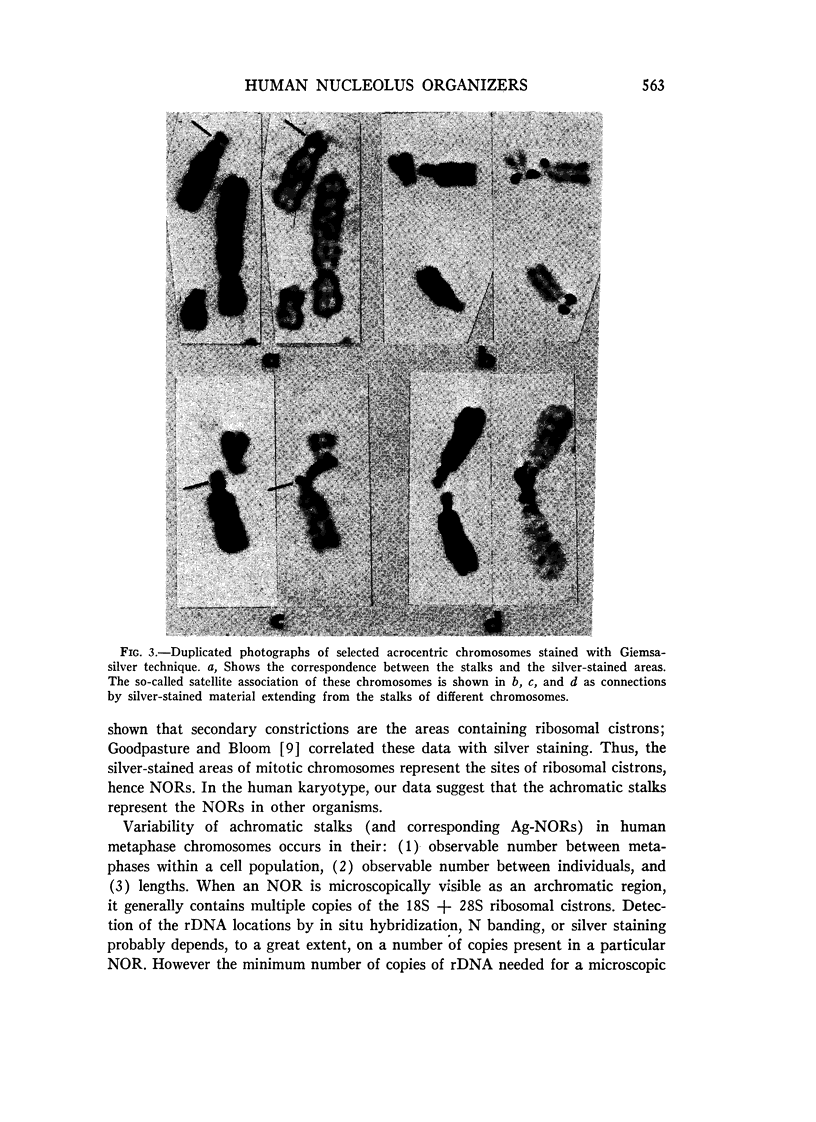
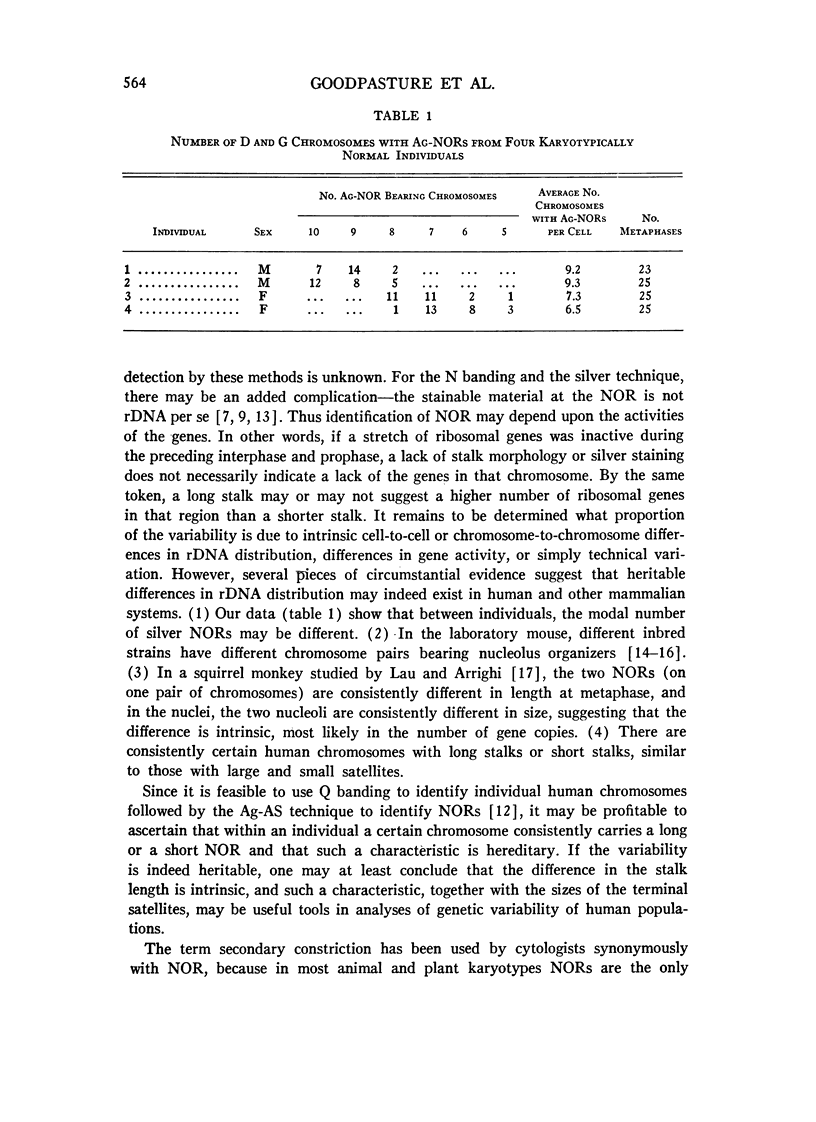
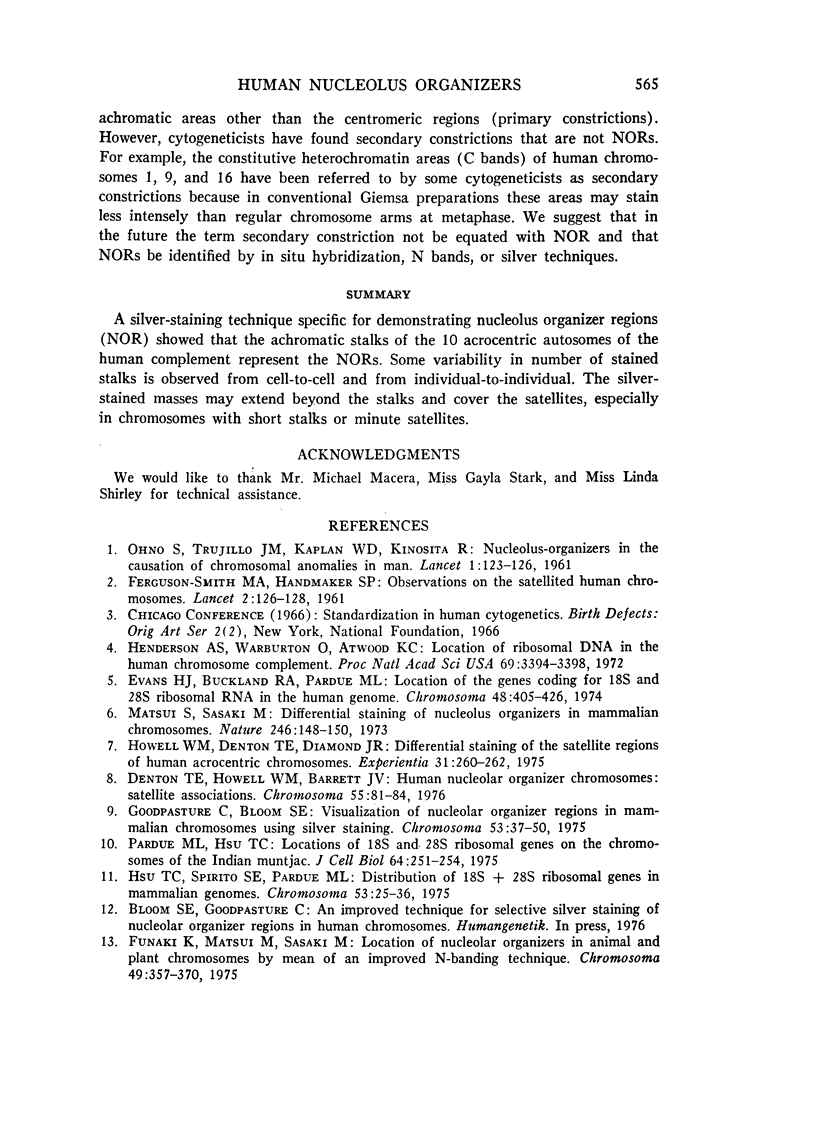
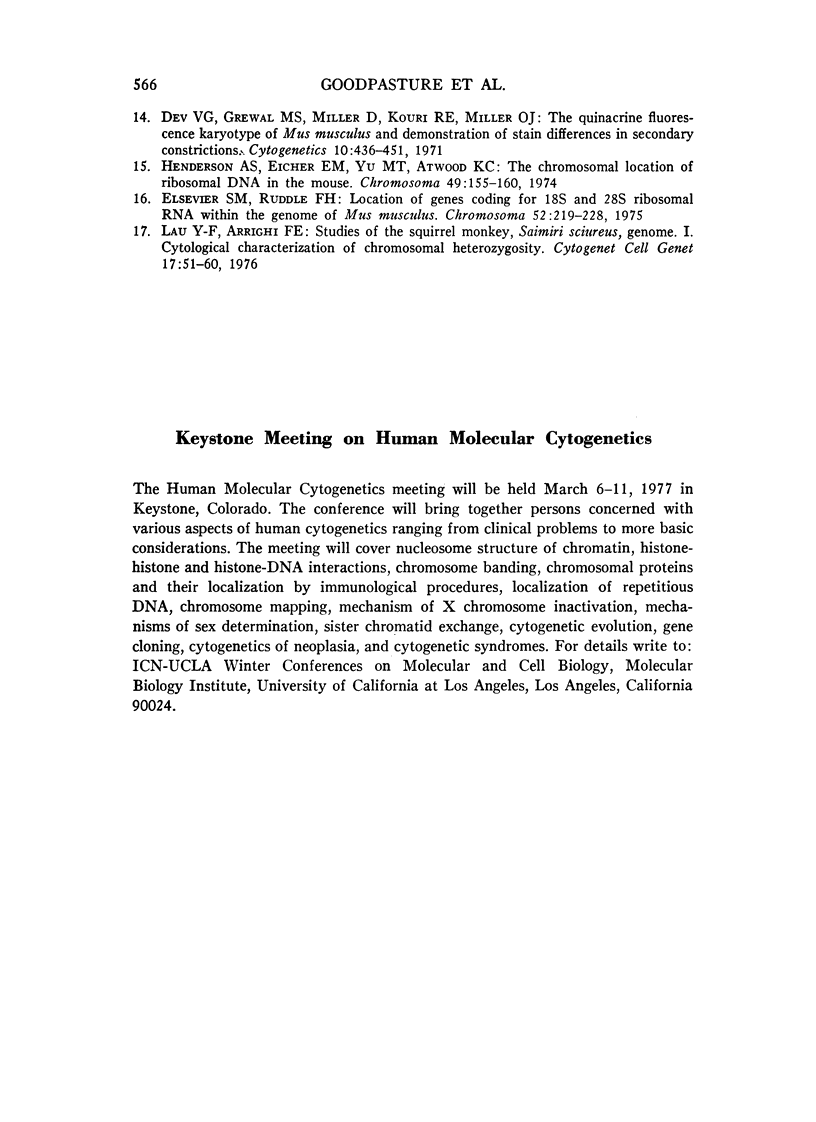
Images in this article
Selected References
These references are in PubMed. This may not be the complete list of references from this article.
- Denton T. E., Howell W. M., Barrett J. V. Human nucleolar organizer chromosomes: satellite associations. Chromosoma. 1976 Mar 31;55(1):81–84. doi: 10.1007/BF00288330. [DOI] [PubMed] [Google Scholar]
- Dev V. G., Grewal M. S., Miller D. A., Kouri R. E., Hutton J. J., Miller O. J. The quinacrine fluorescence karyotype of Mus musculus and demonstration of strain differences in secondary constrictions. Cytogenetics. 1971;10(6):436–451. doi: 10.1159/000130164. [DOI] [PubMed] [Google Scholar]
- Elsevier S. M., Ruddle F. H. Location of genes coding for 18S and 28S ribosomal RNA within the genome of Mus musculus. Chromosoma. 1975 Oct 14;52(3):219–228. doi: 10.1007/BF00332112. [DOI] [PubMed] [Google Scholar]
- FRASER A. C., TATFORD E. P. Management of third-stage complications in domiciliary obstetrics. Lancet. 1961 Jul 15;2(7194):126–129. doi: 10.1016/s0140-6736(61)92648-4. [DOI] [PubMed] [Google Scholar]
- Funaki K., Matsui S., Sasaki M. Location of nucleolar organizers in animal and plant chromosomes by means of an improved N-banding technique. Chromosoma. 1975;49(4):357–370. doi: 10.1007/BF00285128. [DOI] [PubMed] [Google Scholar]
- Goodpasture C., Bloom S. E. Visualization of nucleolar organizer regions im mammalian chromosomes using silver staining. Chromosoma. 1975 Nov 20;53(1):37–50. doi: 10.1007/BF00329389. [DOI] [PubMed] [Google Scholar]
- Henderson A. S., Eicher E. M., Yu M. T., Atwood K. C. The chromosomal location of ribosomal DNA in the mouse. Chromosoma. 1974;49(2):155–160. doi: 10.1007/BF00348887. [DOI] [PubMed] [Google Scholar]
- Henderson A. S., Warburton D., Atwood K. C. Location of ribosomal DNA in the human chromosome complement. Proc Natl Acad Sci U S A. 1972 Nov;69(11):3394–3398. doi: 10.1073/pnas.69.11.3394. [DOI] [PMC free article] [PubMed] [Google Scholar]
- Howell W. M., Denton T. E., Diamond J. R. Differential staining of the satellite regions of human acrocentric chromosomes. Experientia. 1975 Feb 15;31(2):260–262. doi: 10.1007/BF01990741. [DOI] [PubMed] [Google Scholar]
- Hsu T. C., Spirito S. E., Pardue M. L. Distribution of 18+28S ribosomal genes in mammalian genomes. Chromosoma. 1975 Nov 20;53(1):25–36. doi: 10.1007/BF00329388. [DOI] [PubMed] [Google Scholar]
- Lau Y. F., Arrighi F. E. Studies of the squirrel monkey, Saimiri sciureus, genome. I. Cytological characterization of chromosomal heterozygosity. Cytogenet Cell Genet. 1976;17(1):51–60. doi: 10.1159/000130687. [DOI] [PubMed] [Google Scholar]
- Matsui S., Sasaki M. Differential staining of nucleolus organisers in mammalian chromosomes. Nature. 1973 Nov 16;246(5429):148–150. doi: 10.1038/246148a0. [DOI] [PubMed] [Google Scholar]
- OHNO S., TRUJILLO J. M., KAPLAN W. D., KINOSITA R. Nucleolus-organisers in the causation of chromosomal anomalies in man. Lancet. 1961 Jul 15;2(7194):123–126. doi: 10.1016/s0140-6736(61)92647-2. [DOI] [PubMed] [Google Scholar]
- Pardue M. L., Hsu T. C. Locations of 18S and 28S ribosomal genes on the chromosomes of the Indian muntjac. J Cell Biol. 1975 Jan;64(1):251–254. doi: 10.1083/jcb.64.1.251. [DOI] [PMC free article] [PubMed] [Google Scholar]




